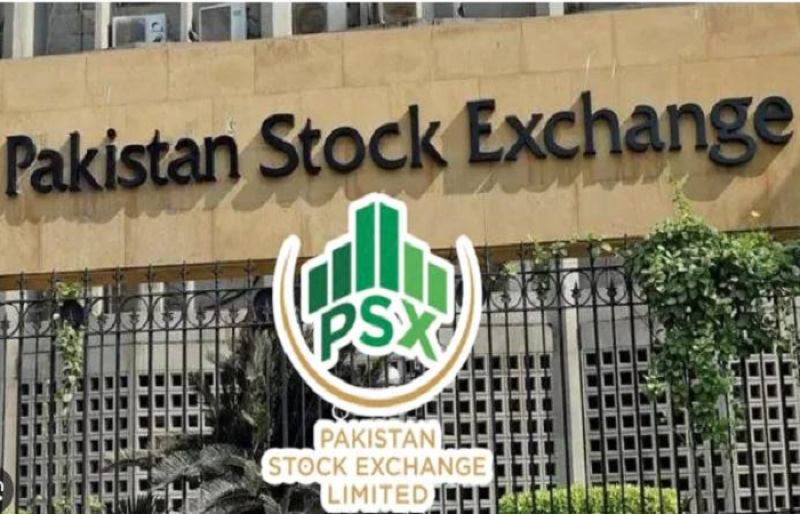Business
PSX surges to fresh peak on second day of strong gains | The Express Tribune
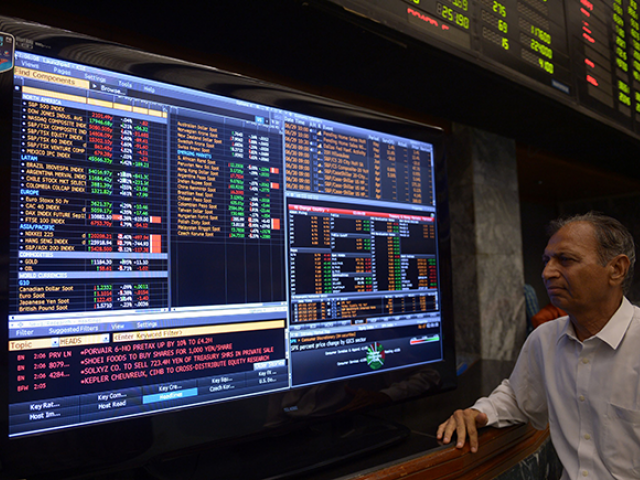
The Pakistan Stock Exchange (PSX) on Tuesday witnessed strong bullish momentum for a second consecutive day, driving the benchmark index to a new record high.
By mid-day, the benchmark index had surged even further, touching an intraday high of 166,556.29 before settling at 165,774.16. The rally added 1,926 points compared to the previous close of 163,847.68.
Market activity remained vibrant, with trading volume recorded at nearly 390 million shares, valuing transactions at over Rs39.5 billion. The day’s low was 164,208.33. Analysts attributed the gains to strong investor sentiment, fuelled by positive expectations on the economic front and institutional buying.
Trading opened with a gain of 940 points, lifting the KSE-100 Index to 164,787 points during intra-day trading. Momentum remains positive, with the index so far rising by 1,296 points to 165,144 points.
The rally builds on Monday’s session, when the market also posted significant gains and set fresh highs.
Read: Stocks jump to fresh peak over IMF review
Earlier on Monday, Pakistan Stock Exchange (PSX) opened the week on a highly strong note as the KSE-100 index soared 1,591 points to close at a new record high at 163,848.
Buying interest remained robust, particularly in attractive stocks, pushing the index to the intra-day peak of 163,904, while the day’s low stood at 162,059. There was brisk activity, reflected in high trading volumes of 1.3 billion shares.
Investors drew support from the visit of an International Monetary Fund (IMF) mission for the second review of its $7 billion Extended Fund Facility (EFF) and first assessment under the Resilience and Sustainability Facility (RSF).
Arif Habib Limited (AHL), in its commentary, wrote that stocks took a solid start to the week with the KSE-100 index gaining 0.98% day-on-day and reaching the high of 163.9k in intra-day trading.
Some 60 shares rose while 40 fell, where Fauji Fertiliser Company (+3.1%), Pakistan State Oil (+6.16%) and HBL (+2.51%) contributed the most to index gains. On the contrary, Engro Holdings (-0.66%), Lucky Cement (-0.73%) and DG Khan Cement (-2.52%) were the biggest drags, it stated.
Among corporate news, Ghandhara Automobiles (+0.04%) announced FY25 earnings per share (EPS) of Rs71.85, up 11x year-on-year (YoY), and dividend per share of Rs10, which was above expectations.
Additionally, Air Link Communication (+10%) announced FY25 EPS of Rs12.01, +3% YoY, and dividend per share of Rs7, which also beat expectations. AHL estimates the weekly draw will remain at 165k with support rising to 162k.
Business
India’s retail sector: Market to hit $1 trillion by 2030; digital and D2C formats set to reshape traditional shopping – The Times of India

India’s consumption landscape is gearing up for a major shift over the coming decade, with the country’s retail market expected to reach $1 trillion by 2030. A new report by venture capital firm Fireside Ventures says this surge will be fuelled by rising disposable incomes, faster digital adoption and the growth of a large aspirational consumer class.Fireside argues that the change is not just in size but in the very structure of how Indians shop. The firm notes that retail channels are seeing their “most dramatic reconfiguration yet.” According to the report, general trade—which made up over 90 per cent of retail in 2014—is projected to drop to around 70 per cent by 2030, reported news agency ANI. At the same time, modern trade, e-commerce, quick commerce and direct-to-consumer (D2C) brands are expected to accelerate sharply. D2C and quick commerce alone may account for up to 5 per cent of the total market within the decade.With shoppers increasingly embracing digital-first formats, branded retail is forecast to double and reach nearly $730 billion, which would represent almost half of all retail spending. Fireside highlights that new-age, digital-native brands are currently scaling two to three times faster than conventional companies, helped by agile distribution, data-driven product development and more personalised customer engagement.The analysis outlines several emerging consumer segments. The firm notes, “Map your audiences, and you’ll see the opportunity take the shape of many substantial markets, whether India I, the 15 per cent population driving 35 per cent of retail and 60 per cent of branded purchases; or Bharat, the larger, fast-digitising 85 per cent, hungry for new brands and experiences,” as per ANI.By 2030, India is expected to have 1.1 billion internet users and over 400 million online shoppers. Fireside describes this as the “flattest consumption opportunity” India has ever witnessed.The firm concludes that India’s next hundred iconic consumer brands will be built by founders who blend cultural insight with digital fluency—creating niche, rooted and experimental labels that resonate with a confident, modern and increasingly regional Indian shopper.
Business
PM-Kisan 21st Installment On November 19: Check Eligibility & Register Through QR Code
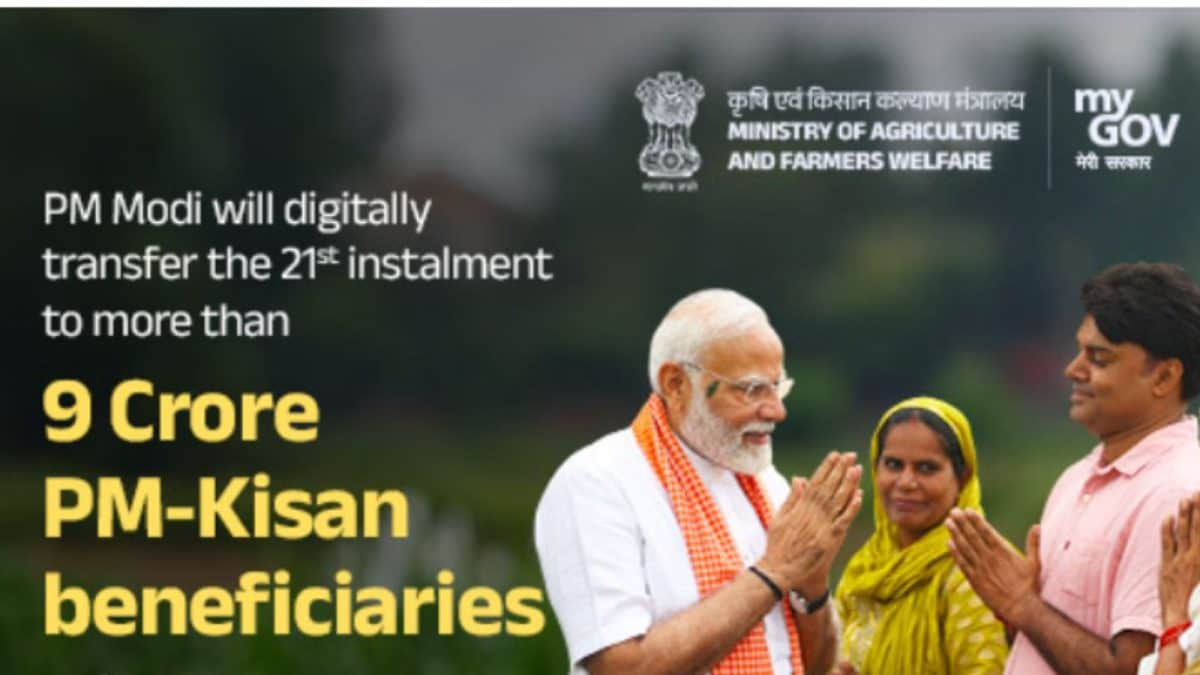
Last Updated:
Prime Minister Narendra Modi will release the 21st PM Kisan installment on November 19, 2025, benefiting over 9 crore farmers.

PM Kisan 21st Installment Date Announced
PM Kisan 21st Installment Date On November 19: Prime Minister Narendra Modi is set to release the 21st installment of Pradhan Mantri Kisan Samman Nidhi (PM Kisan) scheme on Wednesday, November 19, 2025 at 2:00 PM. Over 9 crore PM-Kisan beneficiaries will be benefited by this transfer.
The Centre has already disbursed the 21st installment to farmers of Jammu and Kashmir following the devastating floods. According to the official notification, a total of Rs 170 crore was transferred to 8.5 lakh farmers of Jammu and Kashmir on October 07, 2025.
Under the PM Kisan scheme, eligible farmers get Rs 2,000 every four months, which is Rs 6,000 annually. The money is provided each year in three instalments — April-July, August-November and December-March. The fund is directly transferred to the bank accounts of the beneficiaries.
Farmers, however, need to register and update their e-KYC to be eligible for the next tranche in the scheme.
PM Kisan Scheme e-KYC
To receive the installments, the farmers need to complete their e-KYC. According to the scheme’s official website, “eKYC is MANDATORY for PMKISAN Registered Farmers. OTP-based eKYC is available on the PMKISAN Portal, or the nearest CSC centres may be contacted for Biometric-based eKYC”.
PM Kisan Scheme: How To Check Status If You Are A Registered Farmer?
Farmers who have registered themselves through the CSC centres or online can check their approval status by following these steps:
1. Visit PM Kisan’s official portal — pmkisan.gov.in
2. Click ‘Status of Self Registered Farmer/CSC Farmers’ in the FARMERS CORNER section on the homepage.
3. Enter your Aadhaar number and filling in the captcha to verify your status.
Who Is Eligible for PM Kisan?
To qualify for the PM Kisan’s 21th installment, one must:
- Be a citizen of India
- Own cultivable land
- Be a small or marginal farmer
- Not be a pensioner receiving Rs 10,000 or more per month
- Not have filed income tax
- Not be an institutional landholder.
PM-Kisan: How To Register Via QR Code
New registrations can be done online via the official portal or offline through Common Service Centres (CSCs).
पीएम – किसान की 21वीं किस्त का हस्तांतरण दिनांक – 19 नवंबर 2025 कृपया लिंक पर क्लिक करें और अभी रजिस्टर करें🔗https://t.co/wDVgTbAw6qPM-Kisan’s 21st installment will be released on 19th November 2025. Please click the link and register now. 📷https://t.co/wDVgTbAw6q #AgriGoI pic.twitter.com/QJm4CEan46— PM Kisan Samman Nidhi (@pmkisanofficial) November 15, 2025
Farmers can scan the QR code in the X post to register for the scheme.

Varun Yadav is a Sub Editor at News18 Business Digital. He writes articles on markets, personal finance, technology, and more. He completed his post-graduation diploma in English Journalism from the Indian Inst…Read More
Varun Yadav is a Sub Editor at News18 Business Digital. He writes articles on markets, personal finance, technology, and more. He completed his post-graduation diploma in English Journalism from the Indian Inst… Read More
November 16, 2025, 10:26 IST
Read More
Business
TCS layoffs 2025: Pune Labour Commissioner Summons IT Company Over Illegal Termination Complaints
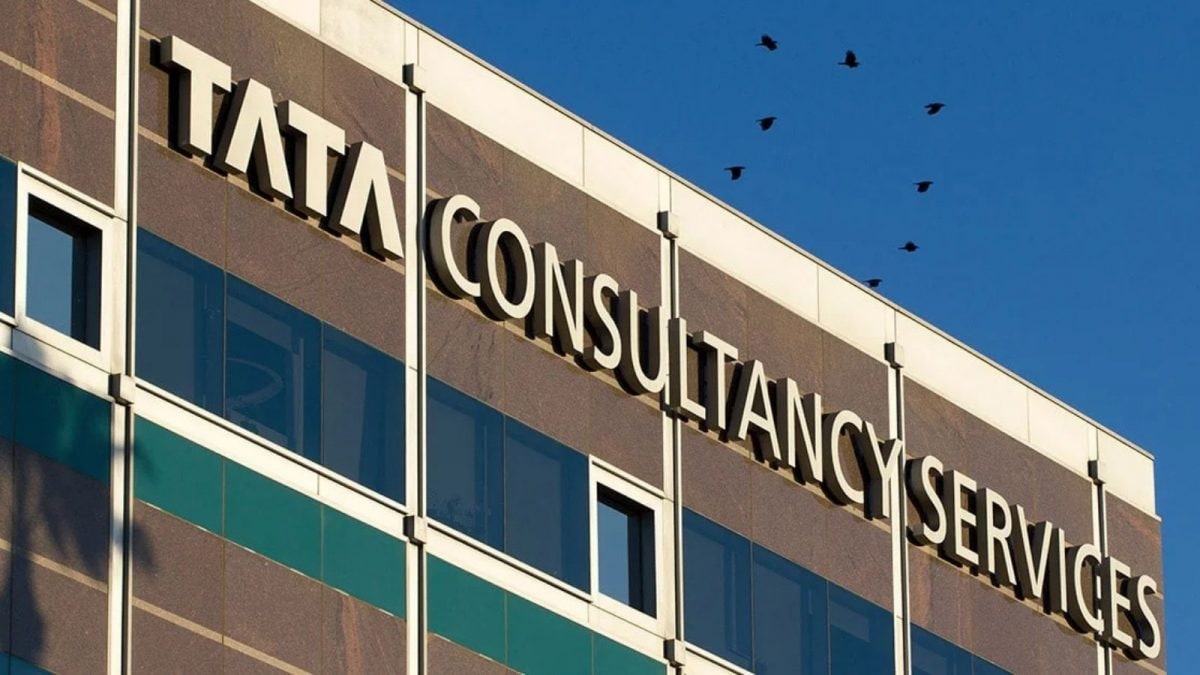
Last Updated:
The Labour Commissioner Office in Pune has summoned Tata Consultancy Services over NITES complaints of illegal termination and layoffs, with a hearing set for 18 November 2025.
TCS layoffs: Unfair Practices Alleged; Labour Commissioner Issues Summons
TCS Layoffs 2025: The Labour Commissioner Office in Pune has issued summons to Tata Consultancy Services (TCS) in several cases filed by the Nascent Information Technology Employees Senate (NITES) ranging from ‘illegal termination of employment’ and ‘unlawful layoffs’. The hearing is scheduled for 18 November 2025.
What Led To The Summons?
NITES in the X post informed that it has received a large number of complaints from TCS employees across various locations regarding abrupt terminations, forced resignations, denial of statutory dues, and coercive employment practices.
“After reviewing the grievances and supporting documents, NITES assisted the affected employees in filing formal complaints before the competent authority,” NITES added in the post.
NITES Urges Affected Employees To Come Forward
The organization also pleaded employees who have faced similar issues to come forward and asset their rights. “If you have experienced wrongful termination, forced resignation, non-payment of dues, or any form of pressure or unfair treatment, you have legal protections available,” it added in the X post.
NITES said that it is committed to supporting IT and ITES employees who require guidance or assistance in filing complaints or understanding available legal remedies.
The Labour Commissioner Office, Pune has issued summons to Tata Consultancy Services (TCS) in multiple matters filed by NITES concerning illegal termination of employment and unlawful layoffs. The hearing has been scheduled for 18 November 2025.Over the past several months,… pic.twitter.com/Ygq826e0b8— Nascent Information Technology Employees Senate (@NITESenate) November 15, 2025
TCS Announces 2% Layoff
Earlier, TCS announced that it would layoff 2 per cent of its employees in this financial year 2025-26 globally, roughly 12,000 employees.
TCS headcount dropped 19,755 in the second quarter of FY26. With the latest reduction, TCS’ total headcount stands at 6,13,069, the company said in its earnings release on October 9. This comes after the company added 5,090 employees sequentially in the previous June quarter.
This marks the second straight year of workforce contraction for TCS, following its first-ever headcount decline in FY24 since listing in 2004. In contrast, the company added 22,600 employees in FY23 and a record 1.03 lakh employees in FY22, reflecting the scale of its earlier expansion.

Varun Yadav is a Sub Editor at News18 Business Digital. He writes articles on markets, personal finance, technology, and more. He completed his post-graduation diploma in English Journalism from the Indian Inst…Read More
Varun Yadav is a Sub Editor at News18 Business Digital. He writes articles on markets, personal finance, technology, and more. He completed his post-graduation diploma in English Journalism from the Indian Inst… Read More
November 16, 2025, 08:54 IST
Read More
-

 Entertainment1 week ago
Entertainment1 week agoChina unveils£5.4 bn Fujian, its most advanced aircraft carrier yet
-

 Tech6 days ago
Tech6 days agoFrom waste to asset: Turning ethanol production CO₂ into jet fuel
-

 Entertainment1 week ago
Entertainment1 week agoRobert Pattinson jokes about competing with Gen Z
-

 Politics1 week ago
Politics1 week agoIDF lawyers warned of possible Gaza war crimes: US intel findings
-

 Sports1 week ago
Sports1 week agoIsraeli cycling team loses top sponsor despite honoring request to remove country from name
-
Sports7 days ago
College football winners and losers: The catch of the year saves Indiana
-

 Entertainment1 week ago
Entertainment1 week agoAlex Cooper apologizes to Taylor Swift for bizarre admission
-
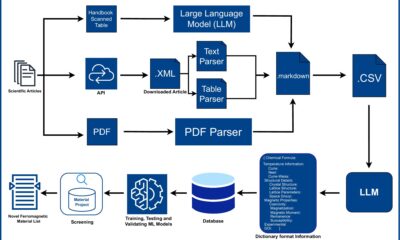
 Tech1 week ago
Tech1 week agoMagnetic materials discovered by AI could reduce rare earth dependence



